
views
Taking Your Armhole Measurement
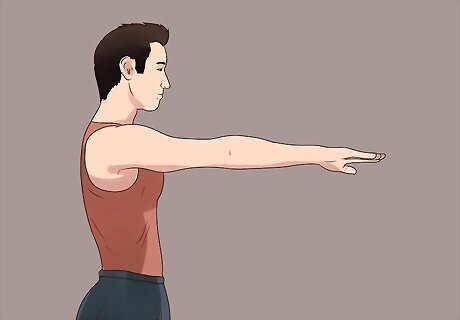
Raise your arm. Extend your arm straight out so that it is perpendicular to the rest of your body. You can work with either the left or right arm. It is easiest to take an accurate measurement for your Armhole if you have a second person helping you. Your helper will need to use the tape measure while you keep your arm in position. If you do not have a helper to assist you, it might be easiest to measure the Armhole of your non-dominant arm while using your dominant hand to hold and maneuver the tape measure. You should stand in front of a full-length mirror, as well.
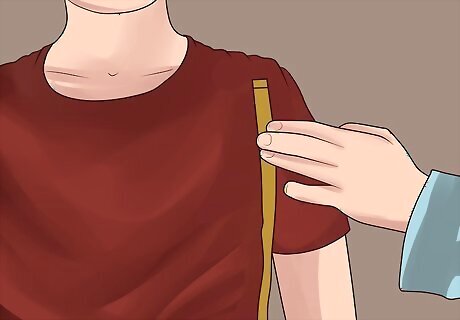
Wrap the tape measure from the shoulder to the armpit. Position the starting (zero) end of the tape measure flat against the the center of your shoulder. Draw the tape measure down over the front of your shoulder and arm, pausing once it hits the center of your armpit. This measurement is sometimes referred to as your Armhole depth. It is not a full Armhole measurement, however, so you should keep going if you need the full measurement instead of the depth measurement. Keep the tape measure flat against your body. It should also be vertically straight along the front of your body.
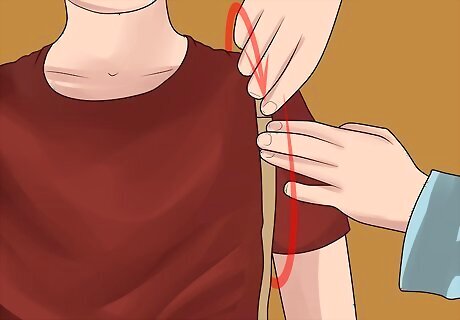
Wrap the tape measure back up to the shoulder. Continue wrapping the tape measure around your arm and shoulder, drawing it up from behind your shoulder until it meets the starting end. This measurement is your full Armhole measurement. The tape measure must be vertically straight along the back and front of your shoulder. Make sure that it also lies flat against your body. Note that your full Armhole measurement should be twice as large as your Armhole depth. Since it may not be exactly twice as large, though, it is best to take the actual measurement instead of mathematically doubling the depth measurement.
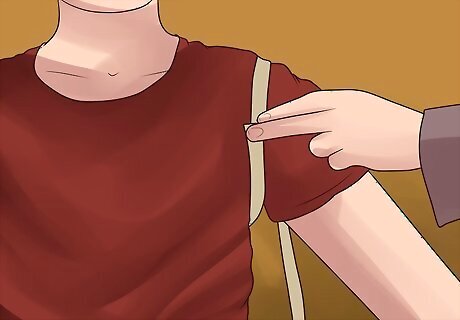
Keep it comfortable. With the tape measure held in place, move your arm around. Rotate it back and forth, then up and down. The tape measure should not be tight enough to restrict the movement of your arm in any way. As a general rule, place two fingers underneath the measuring tape and against your body as you take the measurement. Do not stretch the tape, either. Following these two precautions should prevent the Armhole from being too tight. When in doubt, a measurement that is slightly too large is better than one that is too small. To ensure the arm hole is located in the right place, you should also measure the circumference of your chest; from the center of your back to the tip of your shoulder; and from the center of your back to your hip.
Estimating Armhole Measurement from a Shirt
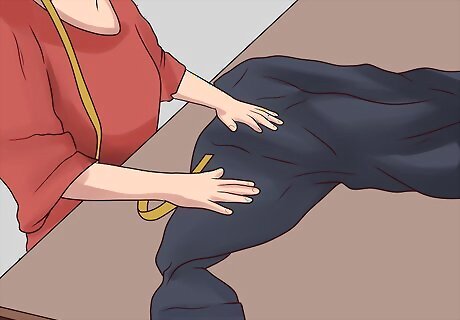
Find a shirt that fits well. Choose a shirt with comfortable, appropriately sized arm holes. Spread this shirt out flat over a hard surface, like a table or desk. Smooth out the material so that there is no bunching around the Armhole area. The sleeve length of the shirt does not matter. It can even be sleeveless as long as it has an actual Armhole. Do not use a tank top with spaghetti straps, a halter top, or a strapless top, though. This method is good to use if you do not have a helper to assist you in taking a traditional Armhole measurement.
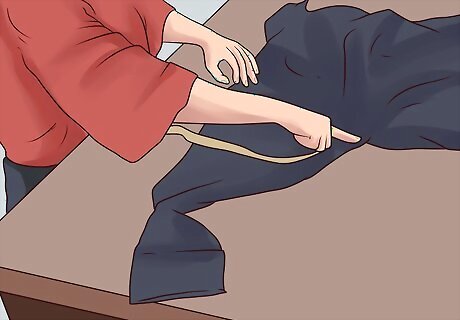
Curve the tape measure around the front Armhole. Make sure that the front of the shirt faces up. Position the starting (zero) end of the tape measure at the top of the Armhole seam, then carefully adjust the tape measure along the curve of the seam until it reaches the bottom. You will need to keep the tape measure on its side as you wind it around the Armhole seam. Keep the tape measure aligned to this seam as precisely as possible. The resulting measurement corresponds to your Armhole depth. It is only about half of your full measurement, though.
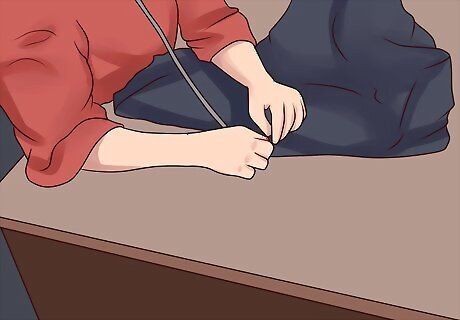
Measure the back Armhole separately. Flip the shirt over to the back. Smooth it out, then measure the back Armhole seam with your tape measure. As before, position the starting end of the tape at the top of the Armhole seam. Extend the tape down the curve of the seam until it reaches the bottom. Your front and back Armhole depth will usually be the same. The back Armhole depth can occasionally be larger by as much as 5/8 inch (1.6 cm), though, so it is best to take both measurements separately just to be safe.

Add the two measurements together. Add the front Armhole depth and back Armhole depth together to calculate your total Armhole measurement. This is only an estimate of your true Armhole measurement, so it is not quite as accurate as a traditional measurement would be. Nonetheless, this estimate should still produce satisfactory results in most instances.
Measuring a Pattern Armhole
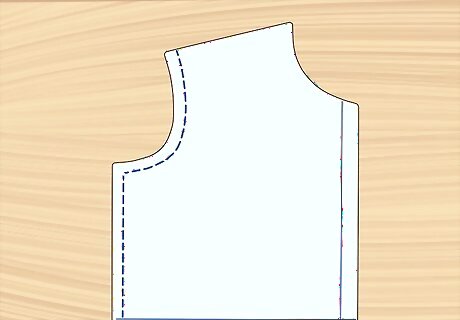
Identify the stitching line. Look at the front pattern piece and identify the stitching line along the Armhole opening. The stitching line is the dotted line indicating where you will actually make your stitches. Do not measure along the outer perimeter of the Armhole since that measurement would not accurately reflect the dimensions of the eventual hole. If you are drafting the pattern from scratch instead of working with a commercial pattern or previously made pattern, you will need to sketch the stitching line in place. Use a French curve or curved ruler to make sure that the seam allowances are the same all along the Armhole.
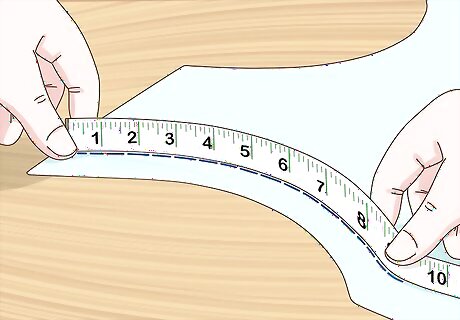
Measure along the curve. Place the starting (zero) end of the tape measure at the top of the Armhole stitching line, just beneath the seam allowance. Extend the tape down along the curve until you reach the bottom seam allowance. You should not include the seam allowances in your measurement since they have no impact on the size of the actual opening. The tape measure will need to stand on its side as you work with it. Make sure that the tape follows the stitching line precisely.
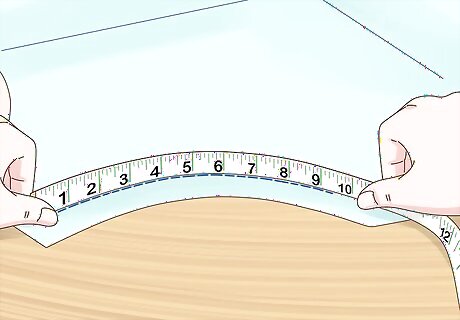
Take a measurement from the back piece, as well. Locate the stitching line on the back pattern piece. Place the starting end of the tape measure at the top of the Armhole stitching line, then wind it down the curve until it reaches the bottom. As with the front pattern piece, you should not include the seam allowances in your measurement. Doing so would skew the results.

Add the measurements together. Add the front Armhole measurement to the back Armhole measurement. The sum of the two will indicate the dimensions of the total Armhole measurement. The back Armhole measurement might be larger than the front Armhole measurement by 1/2 inch to 5/8 inch (1.25 to 1.6 cm). If the measurements are off by more than this amount, however, the balance is off. Also note that the back Armhole measurement should not be smaller than the front Armhole.

Consider the ease. The total Armhole measurement should be altered as needed to allow for ease of movement in the final piece. The material can make a difference. If you're working with a pattern drafted to woven fabrics but choose to work with a knit fabric, shorten the ease by 1/2 inch (1.25 cm). If you are working with a knit pattern but want to convert it for use with woven fabrics, lengthen the ease by 1/2 inch (1.25 cm). If you took your Armhole measurement and added some slack into the measurement already, you do not need to add in extra ease here.
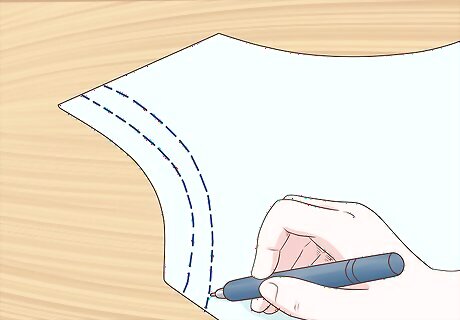
Adjust as needed. If the Armhole on the pattern is too large or too small, you may need to adjust it before cutting and sewing your material. The simplest way to do this is to make the curve of the Armhole deeper or more shallow. The curve should be deeper if you need the Armhole to be bigger. It should be more shallow if you need the hole to be smaller. Do not alter the shoulder or side seams to change the Armhole measurement. Keep in mind that no matter what you do, the base of the Armhole from the front pattern piece must meet with the base of the Armhole from the back pattern piece. The same applies to the top points of the Armhole. When you alter the Armhole size of a pattern, you will also need to alter the shoulder opening of any sleeve you plan to attach so that the two measurements will match.




















Comments
0 comment